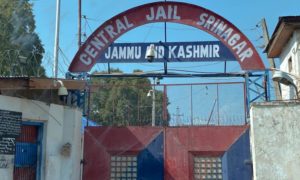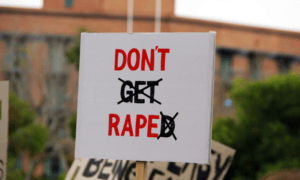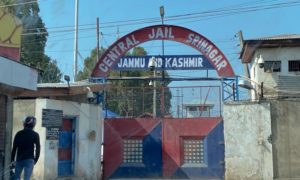A local Gujjar leader said there were human bites on her body and her legs were broken.
Mainstream Media published the photo, following its availability on social media, without blurring it.
Publishing the details that reveal the identity of the survivors, or victims of rape or sexual assault is a grey area as far as ethics of journalism are concerned. But the law has been pretty clear about it. The publisher can be imprisoned, or fined.
Whoever prints or publishes the name or any matter which may make known the identity of any person against whom an offence under section 376, section 376A, section 376B, section 376C, or section 376D is alleged or found to have been committed, shall be punished with imprisonment of either description for a term which may extend to two years and shall also be liable to fine.
What happened
Unidentified persons allegedly raped, tortured and killed the eight-year-old girl. Srinagar based Rising Kashmir reported on Thursday, that the child’s body was found on Wednesday morning in Hiranagar area, after locals informed her family.
A woman from Rasana village in Hiranagar last saw the girl, at around 3.30 pm on January 10 when she was taking her horses for water, the daily said. “She did not return home and the family feared she had been abducted. We reached the Hiranagar Police Station on January 12,” an unidentified member of the victim’s family said.
“We have filed a First Information Report. A Special Investigation Team has been constituted,” Jammu Inspector General of Police SD Jamwal told NDTV.
Netizens also drew parallels with Zainab, a minor in Pakistan who was raped and dumped in a garbage site.
How different factions reacted
Netizens across Jammu and Kashmir reacted sharply against the alleged rape and murder of an eight year old girl belonging to a nomadic tribe in Kathua district in Jammu and Kashmir.
Opposition parties had staged a walkout from the Legislative Assembly to protest against the murder of the girl of Bakerwal community in Kathua district of Jammu and Kashmir.
As soon as proceedings of the House began, Congress and NC legislators stood up to protest against the murder of the little girl of Kathua. Uproar in the Assembly led to launching an inquiry into the matter. Locals allege that Police responded very late in the matter.
A 15-year-old boy has been arrested over the murder of an eight-year-old girl in Hiranagar area of Kathua district of Jammu and Kashmir.
Although the government responded late, as did the police, the media picked up the photo from the social media, and published it. The photo which has been shared shows the minor, in seemly the same attire of clothing, that she is wearing when her body was found.
This raises an important question, regarding the ethics that must be followed while reporting on victims of rape, especially in cases where the victim is a minor.
ALSO READ: #JusticeForAsifa People in JK demand justice for 8-yr-old allegedly raped and murdered in Kathua
In the case of the Delhi bus rape, the media initially self-censored following the ethics of journalism and used a pseudo-name ‘Nirbhaya’.
In the case of the Kathua girl, although the hashtag #JusticeForAsifa already viral on social media had made public the name of the girl, the use of the picture by publications should have been avoided. Unlike the social media, the role of editors with some brains on their desks, so to say, could have taken a call.
What the law says
Under the Section 228-A (Disclosure of identity of the victim of certain offences etc.)
Sub Section (1): Whoever prints or publishes the name or any matter which may make known the identity of any person against whom an offence under section 376, section 376A, section 376B, section 376C, or section 376D is alleged or found to have been committed (hereafter in this section referred to as the victim) shall be punished with imprisonment of either description for a term which may extend to two years and shall also be liable to fine.
Sub Section (2): Nothing in sub-section (1) extends to any printing or publication of the name or any matter which may make known the identity of the victim if such printing or publication is:-
(a) By or under the order in writing of the officer-in-charge of the police station or the police officer making the investigation into such offence acting in good faith for the purposes of such investigation; or
(b) By, or with authorization in writing of, the victim; or
(c) Where the victim is dead or minor or of unsound mind, by, or with the authorization in writing of, the next of kin of the victim:
Provided that no such authorization shall be given by the next of kin to anybody other than the chairman or the secretary, by whatever name called, of any recognized welfare institution or organization.
Sub Section (3): Whoever prints or publishes any matter in relation to any proceeding before a court with respect to an offence referred to in sub-section (1) without the previous permission of such court shall be punished with imprisonment of either description for a term which may extend to two years and shall also be liable to fine.
Like this story? Producing quality journalism costs. Make a Donation & help keep our work going.












